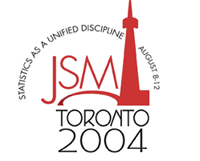|
Activity Number:
|
347
|
|
Type:
|
Luncheons
|
|
Date/Time:
|
Wednesday, August 11, 2004 : 12:30 PM to 1:50 PM
|
|
Sponsor:
|
Biopharmaceutical Section
|
| Abstract - #300912 |
|
Title:
|
Quantitative Pharmacovigilance for Signal Detection
|
|
Author(s):
|
A. Lawrence Gould*+
|
|
Companies:
|
Merck & Co., Inc.
|
|
Address:
|
BL3-2, West Point, PA, 19486,
|
|
Keywords:
|
Bayesian
|
|
Abstract:
|
Quantitative pharmacovigilance often uses proportional reporting ratios (PRRs) to identify drug-event associations reflecting possible toxicity in spontaneous reporting system (SRS) databases. Reports from SRS databases generally cannot be used to establish causality, but may identify potential toxicity issues to be confirmed clinically and epidemiologically. PRRs will be imprecise if there are few reports. Recently described Bayesian methods provide a statistically well-founded way to incorporate this uncertainty into deciding whether a particular finding represents a potential signal or just noise. Quantitative pharmacovigilance methods may be useful for the public health purpose of identifying previously unsuspected potential associations between drugs and combinations of adverse events as well as for ascertaining the adverse-event reporting profile corresponding to a single drug or a class of drugs. Even a small number of event reports may signal a potential association between a drug and the event if the event is rarely reported with other drugs. The methods also allow investigation of complex relationships between drugs, events, and concomitant variables.
|
- The address information is for the authors that have a + after their name.
- Authors who are presenting talks have a * after their name.
Back to the full JSM 2004 program |
